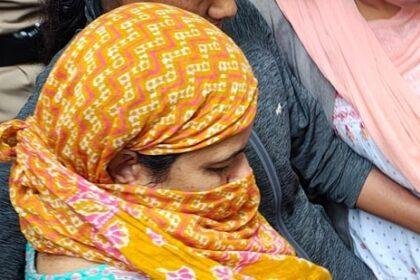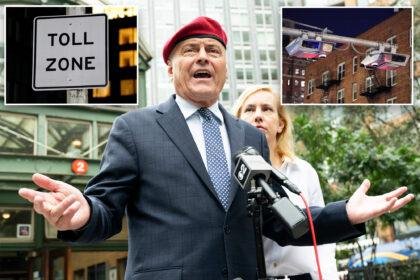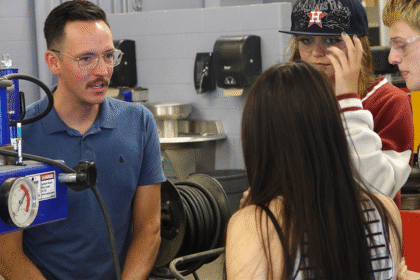Supreme Court Mandates Nationwide Audit to Enhance Road Safety in India
In a landmark ruling on Tuesday, the Supreme Court of India has initiated a comprehensive nationwide audit of footpaths and road crossings across 50 major cities. This decision comes in response to alarming statistics revealing that pedestrians account for over 20% of road fatalities in the country. The court’s directives aim to implement stringent measures to reduce road accident deaths, including mandatory helmet use, strict lane discipline, and a complete ban on unauthorized strobe lights and illegal hooters.
Alarming Statistics Highlight the Need for Action
According to the “Road Accidents in India 2023” report, a staggering 35,221 out of 172,890 road accident fatalities last year involved pedestrians. In cities with populations exceeding one million, 4,604 pedestrian deaths were recorded. These figures underscore the urgent need for improved infrastructure and safety measures to protect vulnerable road users.
The Supreme Court’s ruling was prompted by a public interest litigation filed by Dr. S. Rajeseekaran, a prominent orthopedic surgeon, alongside an application from lawyer Kishan Chand Jain. Both individuals highlighted the increasing incidents of pedestrian fatalities and the lack of enforcement of existing road safety laws.
Addressing Infrastructure Failures
The court’s ruling emphasizes the critical role of infrastructure in ensuring pedestrian safety. It noted the absence of effective laws or enforcement mechanisms to clear footpaths of encroachments, which often forces pedestrians onto busy roadways. This situation significantly heightens their risk of accidents.
To address these issues, the court has directed road-owning agencies in the identified cities, along with the National Highways Authority of India (NHAI), to conduct thorough audits of existing footpaths. The focus will be on crowded areas such as markets, railway stations, bus stands, religious institutions, and educational facilities. Following the audits, authorities are required to develop an action plan to assess the need for additional pedestrian crossings, particularly in areas identified as chronic accident hotspots.
Implementation of Monitoring Systems
In a bid to enhance enforcement, the court has mandated the phased deployment of automated, camera-based monitoring systems. These systems will help prevent encroachment on pedestrian spaces, thereby improving safety for those on foot. The court has also invoked Section 198A of the Motor Vehicles Act, which holds officials and contractors personally liable for pedestrian deaths resulting from infrastructural or design failures.
Comprehensive Road Safety Measures
Beyond pedestrian safety, the Supreme Court’s ruling encompasses several additional areas aimed at improving overall road safety. The court has directed all states, Union territories, and the NHAI to enforce helmet laws rigorously. In 2023 alone, over 54,000 two-wheeler passengers lost their lives due to non-compliance with helmet regulations. Authorities are required to present a mechanism to curb violations, including data on penalties imposed and licenses suspended for non-compliance.
The court has also addressed lane discipline, instructing state transport departments and traffic police to implement measures to combat unlawful or wrong-lane driving. This is crucial, as improper lane usage contributes significantly to road accidents.
Ban on Unauthorized Lights and Hooters
One of the more controversial aspects of the ruling is the complete ban on unauthorized red-blue strobe lights and illegal hooters. The court has ordered market crackdowns and penalties for violations. The Ministry of Road Transport and Highways (MoRTH), along with state transport departments and traffic police, has been tasked with educating drivers and pedestrians about the dangers posed by dazzling headlights and unauthorized lighting.
The bench highlighted that high-intensity headlights, particularly those fitted on two-wheelers, can cause temporary visual disorientation for oncoming drivers and pedestrians. The misuse of hooters and strobe lights creates a false sense of authority, leading to intimidation and panic among road users.
Historical Context and Future Implications
This ruling is not just a response to current statistics; it reflects a growing recognition of the need for systemic change in India’s approach to road safety. Historically, India has struggled with high rates of road fatalities, often attributed to a combination of poor infrastructure, lax enforcement of traffic laws, and a lack of public awareness regarding road safety.
The Supreme Court’s proactive stance could serve as a catalyst for broader reforms in road safety legislation and infrastructure development. By holding officials accountable and mandating audits, the court is setting a precedent that could lead to more stringent regulations and improved safety measures across the country.
Conclusion
The Supreme Court’s recent ruling marks a significant step towards enhancing road safety in India. By addressing pedestrian safety, enforcing helmet laws, and banning unauthorized lighting, the court aims to create a safer environment for all road users. As the nation grapples with the pressing issue of road fatalities, this ruling could pave the way for a more comprehensive and effective approach to road safety, ultimately saving lives and reducing the burden of accidents on society.









